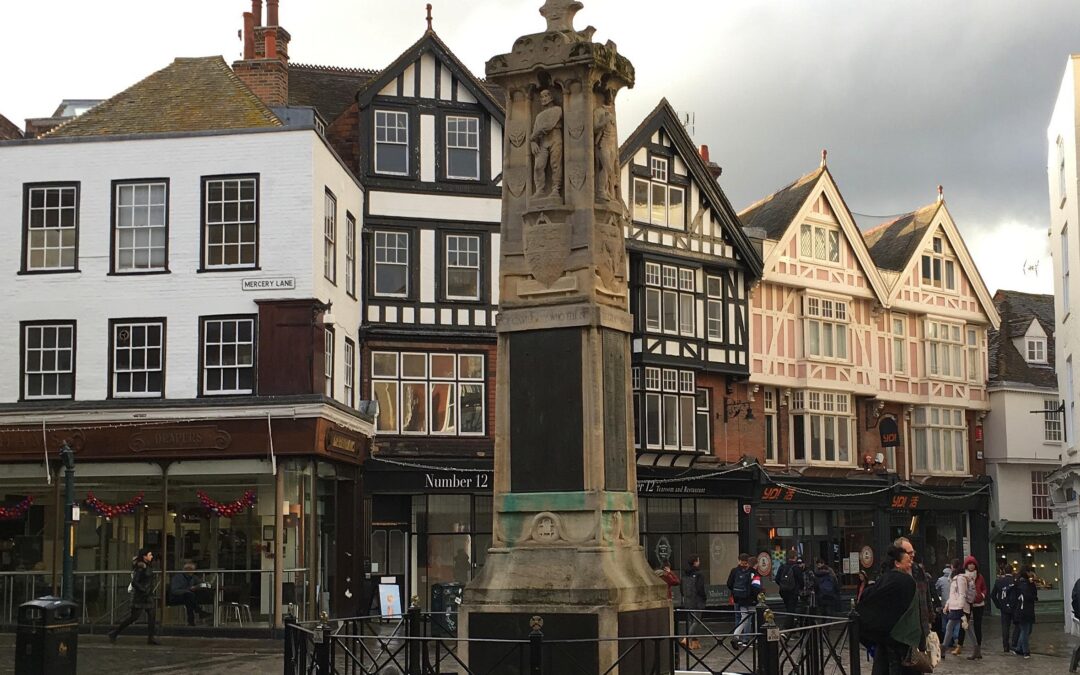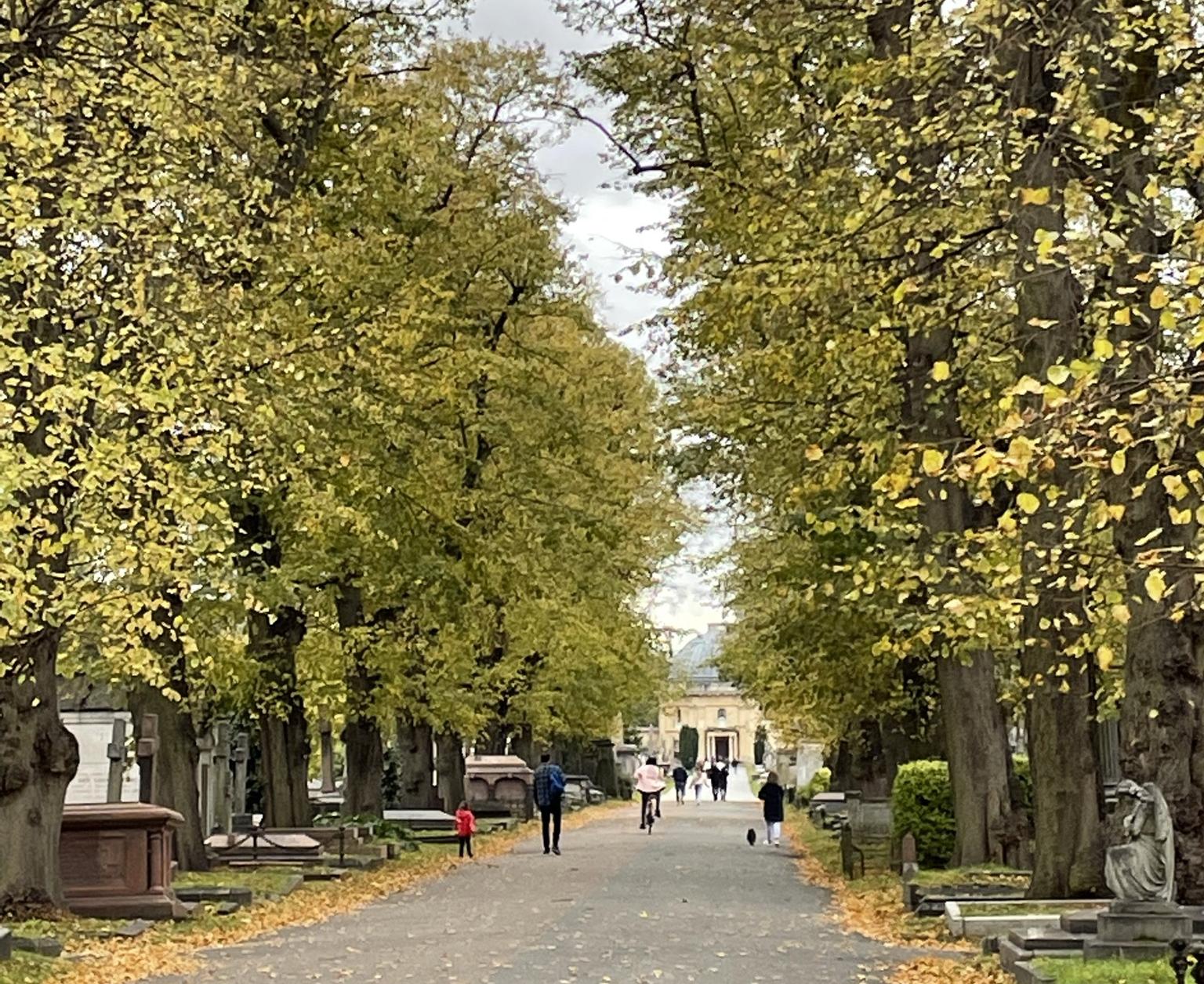Images: Photograph. The War Memorial of Canterbury. Nov. 2018. Canterbury, England. Phyllis Zumwalt, photographer. Private collection.
In the past week, many researchers and historians across the globe observed a day of remembrance for veterans who served in the military for their countries. Especially memorable was the U.K.’s Remembrance Day, the U.S.A.’s Veteran’s Day, and other observances by the Allied Powers, like France, Canada, Belgium and more. See this article for details by country.
Spanning from 1914-1918, WWI was also known as the First World War and the Great War. The conflict started with the assassination of Franz Ferdinand, the Archduke of Austria-Hungary, by a Serbian nationalist while the Archduke and his wife were visiting Bosnia, Sarajevo. Within the month, Austria declared war against Serbia and World War I began.
The U.S. National Archives’ (NARA) WWI page has an interactive timeline where you select and scroll forward through significant events of the war. This page also links to genealogy records, educator resources, and magazine articles, as well as photographs and videos. There is a listing of military records held at the NARA St. Louis facility, along with other interesting links. The war ended in 1918 at the eleventh hour on the eleventh day of the eleventh month (November 11, 1918) when the treaty agreement was signed by both sides (the Central Powers and the Allied Powers) to end fighting; an armistice instead of a surrender. This event on 11 November is recognized worldwide every year, with the U.S. remembering soldiers on Veterans Day and the U.K. defining the day as Remembrance Day.
My daughter and I have traveled throughout the U.K. and were in London on November 11, 2018, the 100th anniversary of the treaty signing. We stood on the Millennium Bridge in London, facing Big Ben at the eleventh hour on the eleventh day of eleventh month, when silence was observed. We watched parades, wore our poppies as remembrance and thought about my own maternal grandfather who served during the Argonne-Meuse conflict in France, at the end of the war. See the top section of this blog which provided pictures and videos from November 11, 2018. The middle of the blog contains links to resources about 20th century conflicts.
As we traveled in the U.K., we noticed memorials honoring the many soldiers who fought and did not return home. Counties (or parishes), cities, and cemeteries erected “crosses of sacrifice” to honor the millions of service members who were killed during the conflict. Many of these soldiers were not transported back to their home country; buried close to where they fell, mainly in France and Belgium. The “cross of sacrifice” was designed by Sir Reginald Blomfield in 1917. Most of these crosses were carved from white stone from the local area. The design include the elongated cross (reflecting the Christian faith) with a bronze longsword (downwards-facing sword, symbolizing war), as described here.
How does this information help with genealogy research? Many of the memorials and statues contain the names of service-members from that place who were missing or killed in action, a useful piece of information when documenting an ancestor’s military service. An example is the War Memorial in Canterbury, England (see photo above). The Imperial War Museum has information about this statue and the 531 service-members who died in WWI (as well as other conflicts). Search this site for others who died during WWI.
Walking through the cemeteries in the U.K. revealed many crosses, some of which honor WWI veterans. We walked through Brompton Cemetery in London (see photos below) and were awestruck at the beauty and peacefulness of it. The Royal Parks system manages this cemetery, and one can search their Burials Database. A last name is required for the search. After you conduct the search, you can return to the search results (top right of that window) and modify the requested search. Most of the burials in Brompton are of local residents, some who probably died during the raids on London.
Images: Photograph. Walking through Brompton Cemetery. Nov. 2021. London, England. Phyllis Zumwalt, photographer. Private collection.
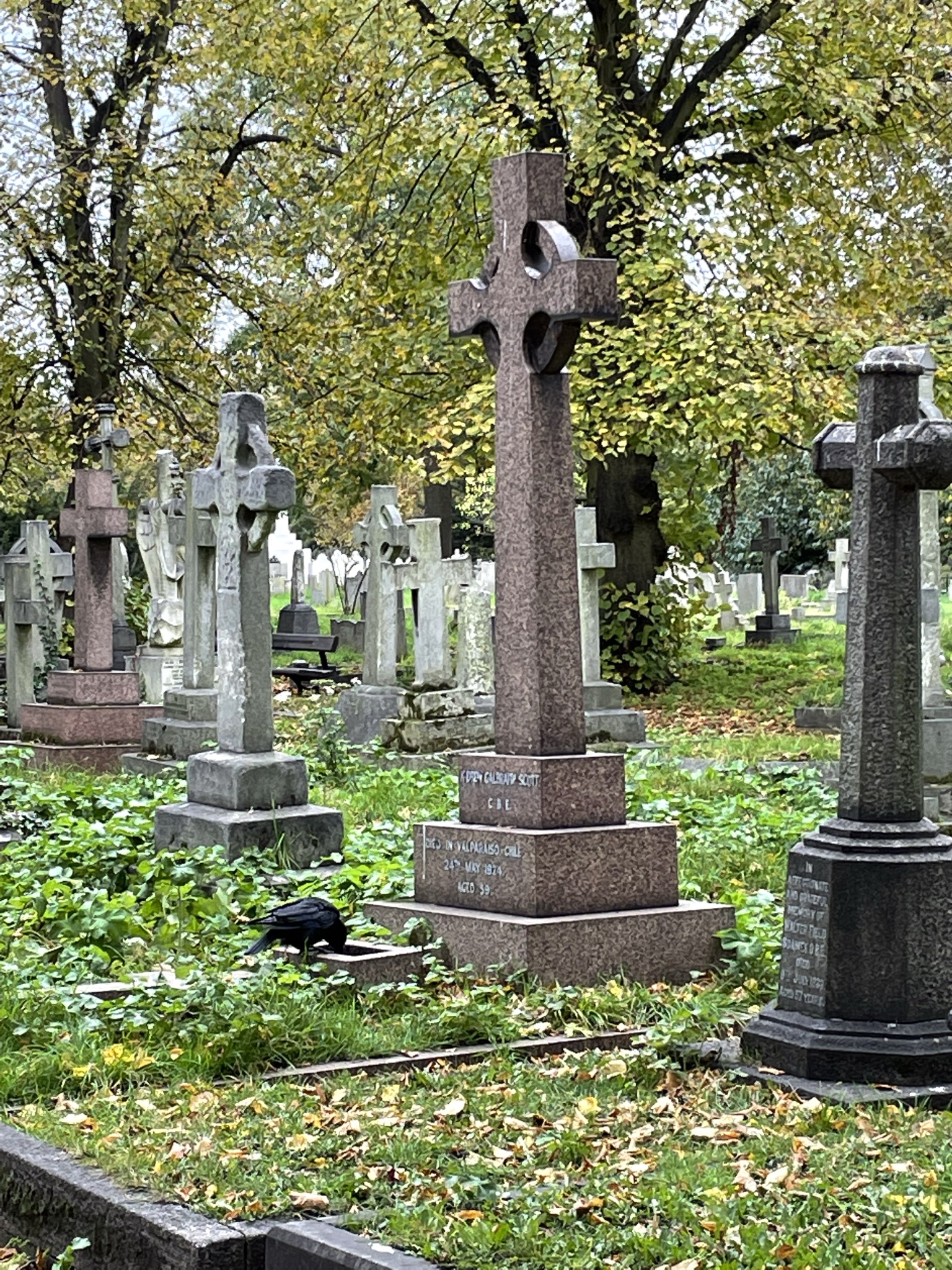
Images: Photograph. Grave markers in Brompton Cemetery. Nov. 2021. London, England. Phyllis Zumwalt, photographer. Private collection.
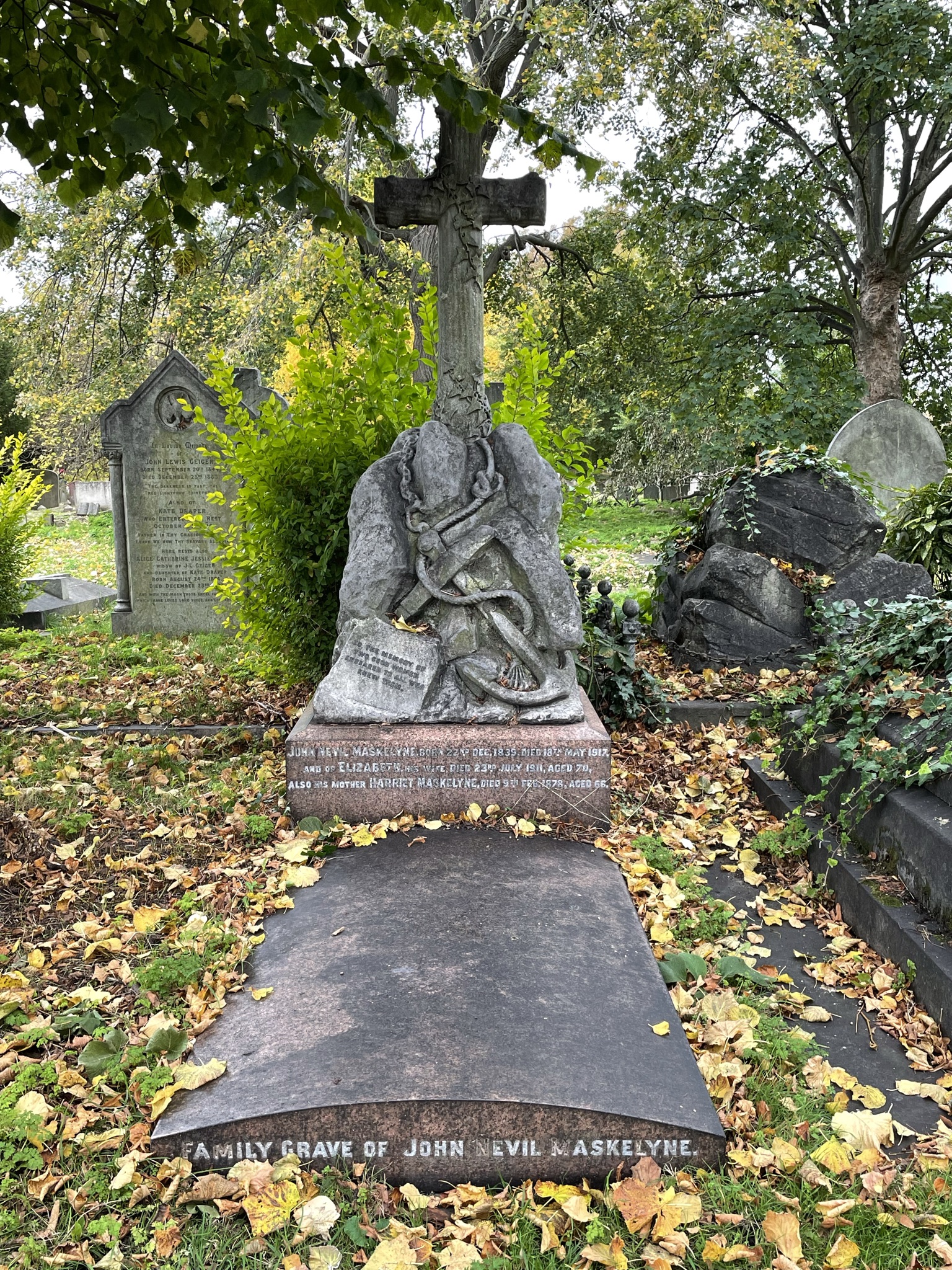
Images: Photograph. Family Grave of John Nevil Maskelyne, Brompton Cemetery. Nov. 2021. London, England. Phyllis Zumwalt, photographer. Private collection.
In Glasgow, Scotland, we walked through the Necropolis, a stunning cemetery atop the hill (see photos below). Necropolises are usually ancient, large and architecturally astonishing, while cemeteries are more ordinary. This realization was evident as we passed mausoleums, graves, and large tombs. The Friends of Glasgow Necropolis webpage is a wonderful resource to visit and use for research, with about 40k+ graves documented online so far. Their roll of honor includes a listing of service-members killed during WWI and also a Heritage Trail. When searching the listing, you can click on the first letter of the last name and see the matches, then use Ctrl-F (find) to search by a specific name. An example was searching the M’s, then McNeil. When reviewing a person, there is a link to click to see their full profile; see this one for Alan Gordon McNeill, MC.
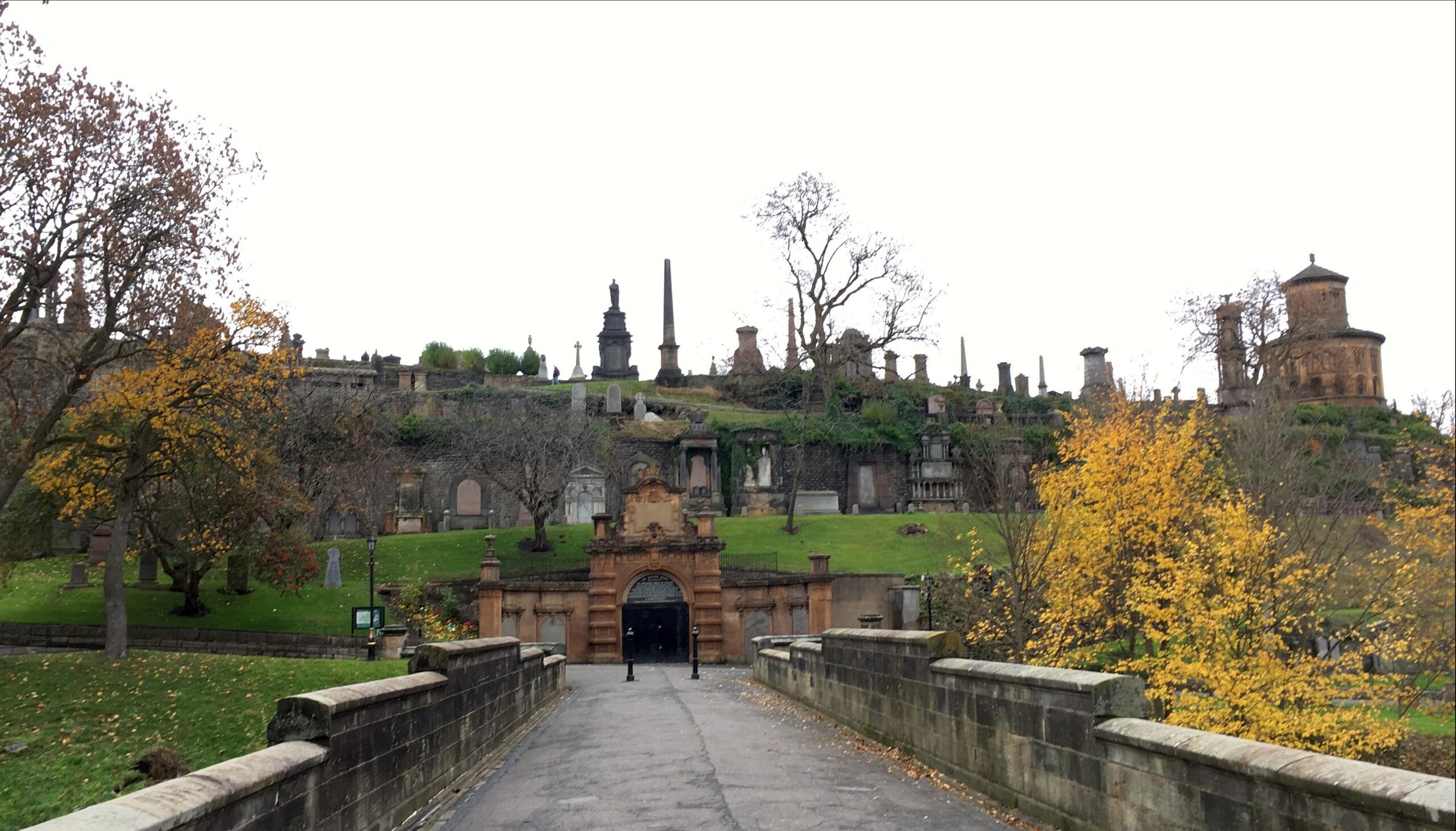
Images: Photograph. Entrance to the Necropolis. Nov. 2018. Glasgow, Scotland. Phyllis Zumwalt, photographer. Private collection.
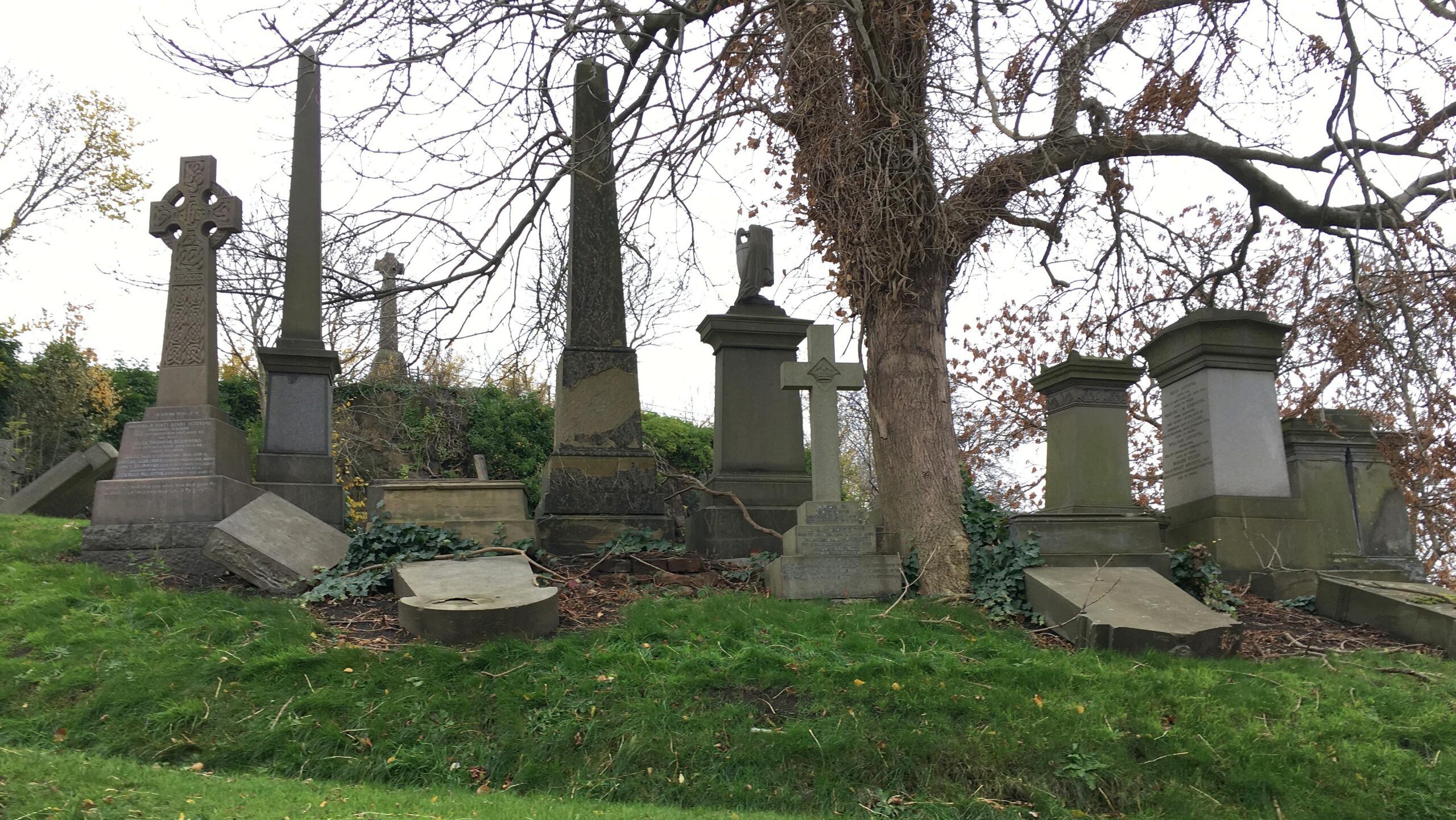
Images: Photograph. Graves toppling on the hillside, Necropolis. Nov. 2018. Glasgow, Scotland. Phyllis Zumwalt, photographer. Private collection.
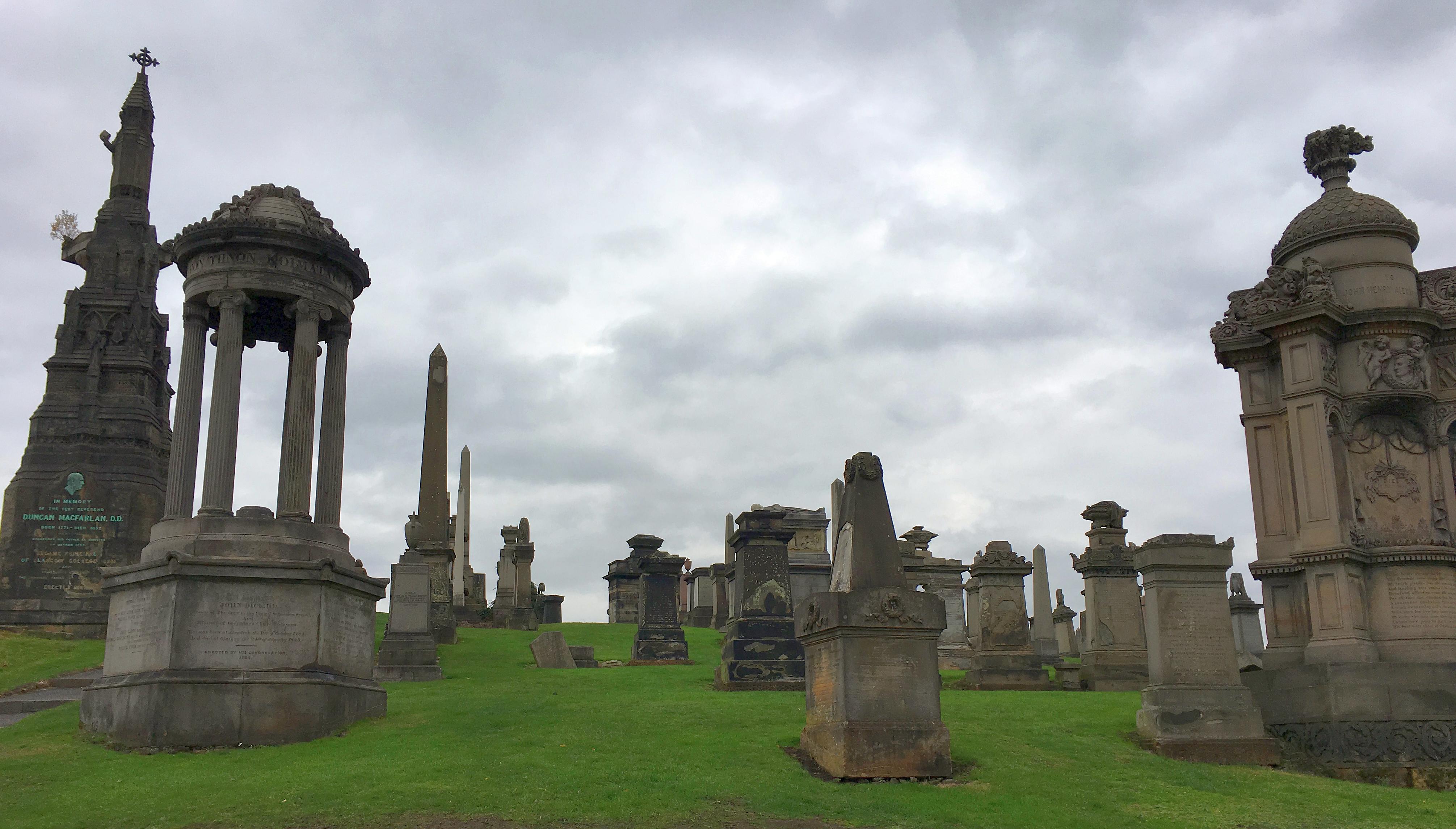
Images: Photograph. Graves, tombs, and markers on top of the hill, Necropolis. Nov. 2018. Glasgow, Scotland. Phyllis Zumwalt, photographer. Private collection.
Memorials for the American service-members are documented on the American Battle Monuments Commission website. Simply check their Cemeteries & Memorial page, and choose to browse by War to see the locations. If you’re not sure where your ancestor was buried, choose the Burial Search page, type in the name information and select which war, then click Search. For instance, I searched by last name, McNeil, and noticed a potential Texas relative (Joe W.), who was buried in the St. Mihiel American Cemetery; a clue to delve into further. At the bottom of his entry is a listing for the unit in which he served, the 359th Infantry Regiment, 90th Division, which included all of the men from that unit who were documented on this website. I’ve used this website to add research information about my great-uncle who was shot down during WWII; Robert Bryant Stricklin, also reviewed on one of my blogs.
Remember – searching for your ancestor may take you on an extensive journey, oftentimes sifting through many websites, databases, books, and other materials. Stay on your research plan and enjoy the adventure!
If you have any questions regarding the information in this blog, please reach out to me. You can also follow SYFT on Facebook, Instagram, Bluesky, or LinkedIn, fill out the Contact SYFT form, or email us directly at shapingyourfamilytree@gmail.com. Sign up for my newsletter to stay current on genealogy events, news, tips and techniques and let’s share our experiences!

